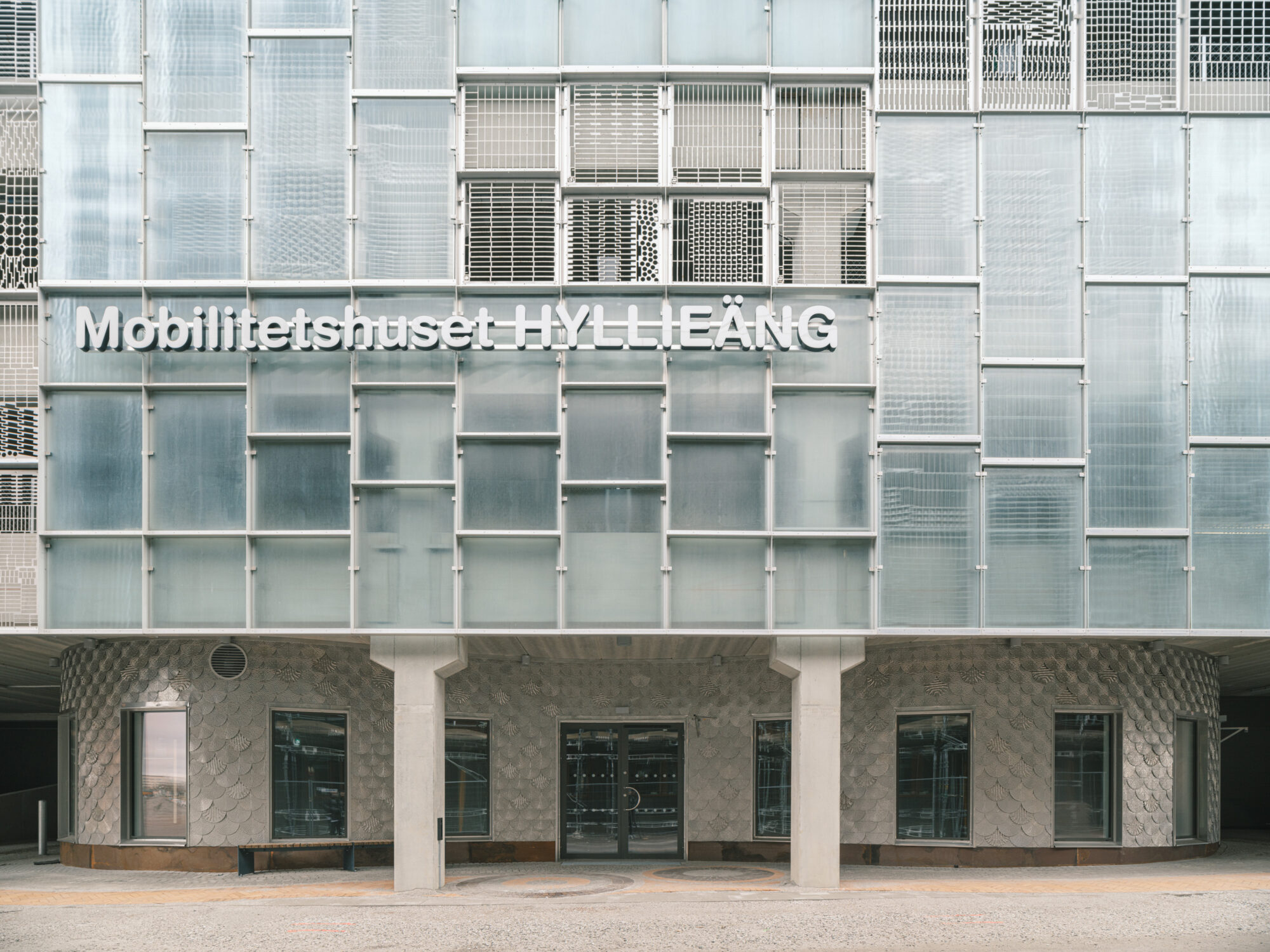2024-02-07
Waste material facade pushes the boundaries of recycling
The Hyllieäng mobility building in Malmö is now complete, with its facade of discarded and sorted materials - despite many unforeseen events along the way. Designing for a high degree of uncertainty is the biggest lesson, says Petra Jenning, architect and innovation manager at FOJAB.
In the Hyllie district of Malmö, there is a building with a facade consisting of used glass panes, leftover sheets from heat exchangers and skeletons from the manufacturing industry, i.e. what is left after punching out shapes from sheet metal. FOJAB has designed the mobility house on behalf of Parkering Malmö.
- "It was our common ambition early on to go beyond the construction sector when looking for materials," says Petra Jenning. "We wanted to explore and push the boundaries of what is possible in reuse.
Dismountable
And at the end of the life of the mobility house, the 2,400 square meter facade will be dismantled and the materials used again. Therefore, all materials are kept as clean and raw as possible. Even the fastening system can be easily dismantled again.
Is it more difficult to create beautiful buildings and environments with reuse and the requirement that everything be reusable?
- I don't think so, there is no contradiction between reuse and beautiful, lovable environments. The façade of Hyllieäng tells a story that adds an extra dimension to the building. But as with all architecture that will last a long time, the design needs to be carefully thought out," says Petra Jenning.
- But yes, she continues, we need to broaden our view of what is beautiful, functional and desirable. Do all kitchen doors have to be new, or is it okay to repaint? In our Malmö office, we have left the century-old factory floor in place with all its imperfections visible. We love it, but it would probably not be tolerated everywhere. We need to be more open to what can work - and it's up to all of us to help.
Different time perspectives
Designing a facade with something that is not normally considered a building material has been special in many ways. Not least, it has been a journey of knowledge for the actors involved to understand each other's conditions.
- The company supplying the skeleton for the project works in weekly or monthly cycles, while architects design houses where the material is not needed for two to three years. This made it difficult for us to know what would be available on the day we needed it. Nobody wants to stockpile materials for several years.
Working with existing materials therefore requires the architect to have a more flexible approach. Hyllieäng became an exercise in dealing with uncertain deliveries and materials that suddenly changed format. And although the end result was still quite similar to the original sketches, an important lesson is to be more prepared for unforeseen events.
- When we work with reuse, it is even more important that we work smart with design systems and digital models to cope with quick and unforeseen changes," says Petra.
Other regulatory framework required
Increased circularity also places other demands on the regulatory framework. The current building permit process is not designed for situations where materials are to some extent unknown well into the process. In the case of Hyllieäng, the city planning office in Malmö was able to evaluate a prototype that gave an idea of the character of the building, even though some details such as the pattern of the cutting plate were not entirely clear.
But when the heat exchanger plates changed format, so that they no longer looked like what had been granted planning permission - we had to rethink, make a new prototype and maintain a close dialog with the city planning office.
- The Malmö city planning office was very accommodating and they too are interested in moving towards more circular construction, but they are of course bound by the law. And it is not certain that they could have allowed the same degree of uncertainty if it was a centrally located building. If we are to succeed with reuse on a larger scale, we need a change in the regulatory framework at the societal level, says Petra.
